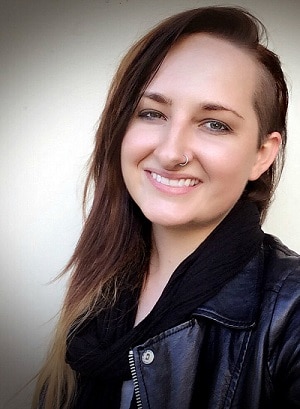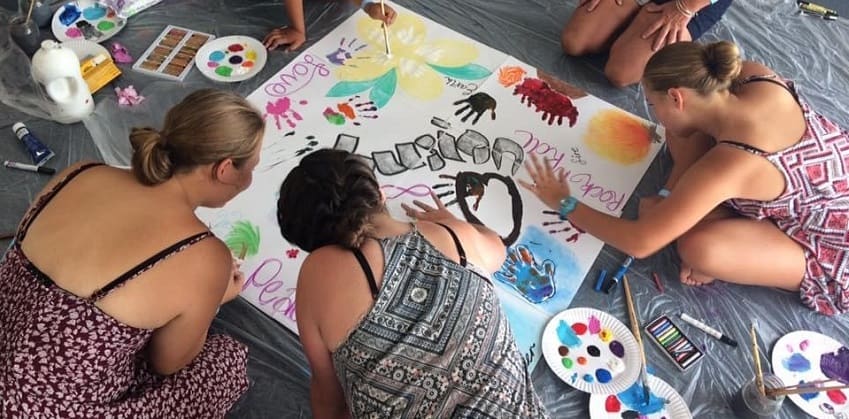This guest blog post is written by Mikarla Teague, Creative Arts Therapist, and it explores the mental health and wellbeing benefits that art can have on us all.

Introducing Mikarla
Mikarla is a Creative Arts Therapist with a passion for working with the LGBTIQAP+ Sistergirl & Brotherboy community and a strong advocate for the power of the Arts as an alternative form of mental health therapy.
Mikarla has worked in communities all around the globe, most notably in Cambodia utilising Art Therapy to work with young women who are survivors of human trafficking and sex slavery.
Arts Therapy facilitates a non-threatening avenue for self-expression especially for young people providing a visual language that allows people to communicate thoughts and feelings that are sometimes too difficult or painful to put into words.
In 2017 Mikarla designed the highly successful PRIDE Art Therapy Program which works with at-risk LGBTIQAP+ young people across Brisbane and Southeast Queensland.
In 2019 Mikarla was the winner of the LGBTI Category at the QLD Mental Health Week Achievement Awards for the success of her program The PRIDE Art Therapy Program.
Art therapy utilises the freedom of self-expression through artwork using mediums such as painting or drawing.
Art therapy has been proven to promote healing by tapping into people’s inner feelings and thoughts, and allowing people to express themselves and communicate in new ways.
The benefits of art therapy
Art Therapy, or more broadly known as creative arts therapy, is based on the idea that creativity enhances the well-being of all people and is a natural aspect of all cultures and human experience.
It is an experiential psychotherapeutic approach utilising many creative modalities within a therapeutic relationship with a trained therapist.
Art Therapy is highly effective in giving voice to experiences and feelings not easily expressed or articulated in words
This form of therapy can be very effective in supporting young people or those with Autism.
When there are challenges to articulate how someone is feeling, using art is great for recognising patterns, thoughts and feelings, resolving issues, managing behaviours, reducing stress, improving self-esteem and self-awareness, self-reflection, and most importantly it compliments and enhances traditional therapies.
The data about art therapy
The program that Mikarla recently ran, Pride Art Therapy, demonstrated decreased isolation, increased positive help seeking behaviours and built confidence and resilience in our most vulnerable LGBTIQ+ Sistergirl and Brotherboy young people.
Large percentages of young people felt a greater sense pride, general mental health and wellbeing, resilience, connection to community, confidence, and inclusion.
To put simply, the evidence shows the program encouraged and inspired young people to discover their potential, celebrate their diversity and live happy and fulfilling lives as the best possible versions of themselves.
Not only did the data show a decrease in feelings of low self-worth, depression, anxiety, and isolation – One of the most profound statistics that was discovered was 100% of participants of art therapy would recommend art therapy to others for their mental health.
Art can also raise serotonin levels. Serotonin of course being the key hormone that stabilizes our mood, feelings of well-being, and happiness.
The takeaways about art
What I have come to believe is that all art is a window, and through this window we enter worlds where light and dark embrace and dance together.
They are places where we can feel fearless in our emotions because they show us we are never alone in them.
We look at a painting and find ourselves in the brushstrokes.
We listen to a piece of music and it’s like our hearts composed the melody.
We read the words and collapse to our knees with the poet.
We roar with thunder.
We burn with the stars.
The arts now offer an evidence-based solution for promoting mental health.
There is so much data and evidence based research that now supports this.
While practising the arts is not the solution for all mental health challenges, there’s enough evidence to support prioritizing the arts in our own lives at home, the medical and mental health fields as well as in our education systems.
I invite you to consider the importance of the arts within your broad and varied fields and practices.
I do hope some of what I have shared with you has resonated with you, or even better, sparked some ideas for your own practices.
Art isn’t supposed to change the world, or to change practical things, but to change perceptions.
Art can change the way we see the world and the worlds of others.
Either way, the benefits of art therapy make it worth exploring as a catalyst for healing.
Find out more about Mikarla’s work as a Creative Art Therapist delivering one on one sessions and group Art Therapy sessions at www.mikarlateague.com.

